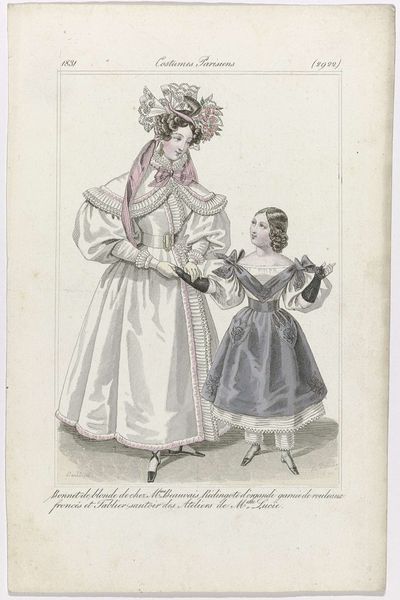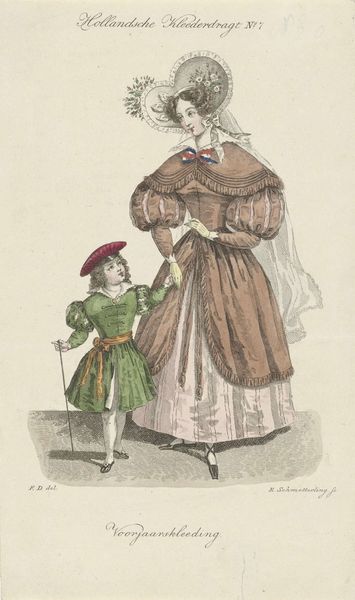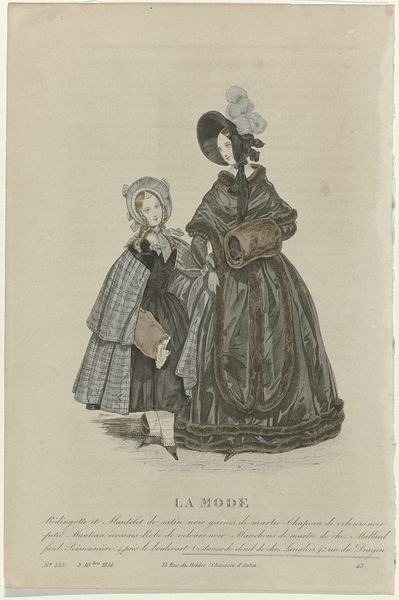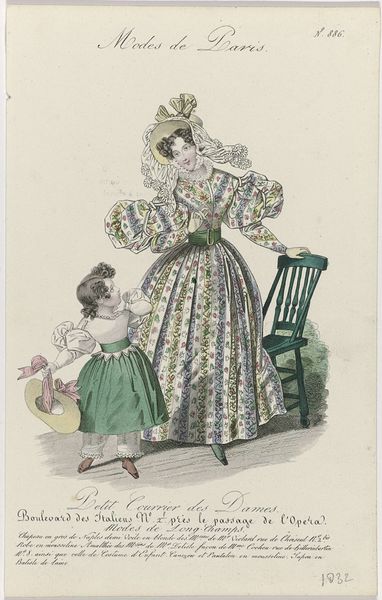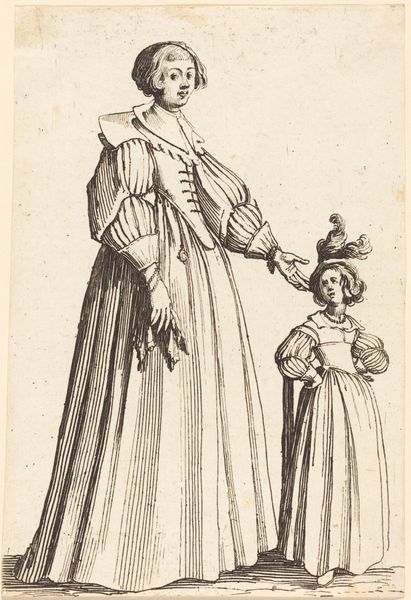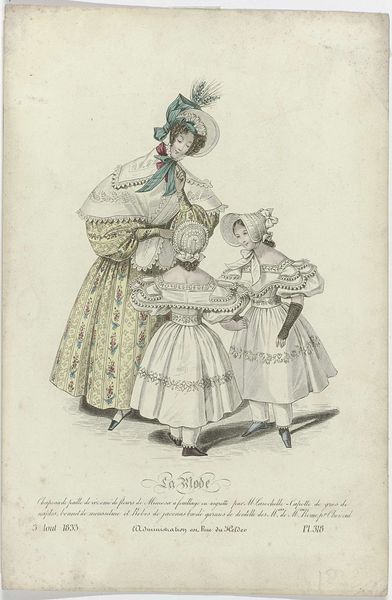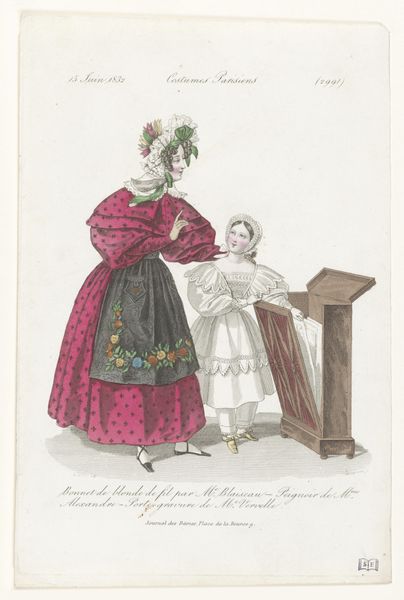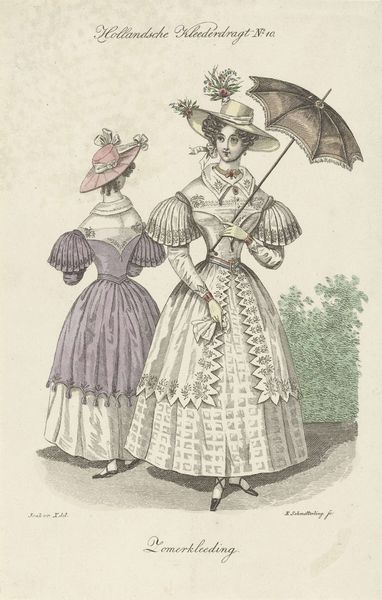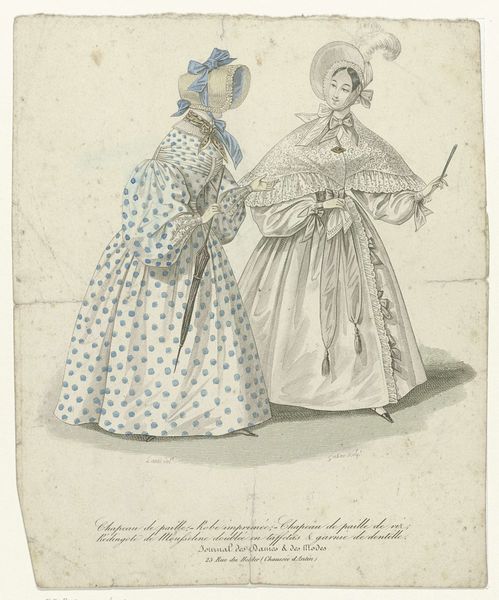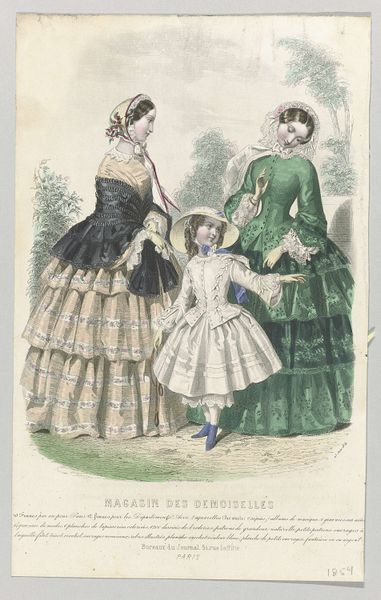
Hollandsche Kleederdragt no. 4: Vrouw en kind in wandelkleding 1832
0:00
0:00
drawing, print
#
portrait
#
drawing
# print
#
figuration
#
romanticism
#
genre-painting
#
dress
Dimensions: height 214 mm, width 136 mm
Copyright: Rijks Museum: Open Domain
Curator: Good morning. Today we're looking at "Hollandsche Kleederdragt no. 4: Vrouw en kind in wandelkleding," or "Dutch Costumes No. 4: Woman and Child in Walking Dress," an 1832 print attributed to Elisabeth Barbara Schmetterling. Editor: What strikes me first is the emphasis on line and delicate patterning; the etching technique highlights every fold, every ruffle. It feels so precise. Curator: Precisely! Look at how Schmetterling uses hatching and cross-hatching to create volume, particularly in the sleeves and the mother’s shawl. The limited color palette further enhances the linear quality. Note the echoed shapes—the mother’s feathered hat mirrored in the daughter’s simpler bonnet. Editor: I notice how idealized these figures are, and yet also representative of a specific social status, this is far from an impartial observation. The clothes speak volumes about wealth and belonging to a particular cultural moment. Curator: Indeed. The emphasis on portraying regional fashion speaks directly to a burgeoning sense of national identity in the Netherlands during the early 19th century. Costume books like these were highly popular. They are important historical documents showing prevailing sartorial and social customs. The very details that appear excessive can be deciphered as the visual codes and markers of class in Dutch society. Editor: True. I’m also seeing the romanticization of domestic life. The bond between mother and daughter feels staged and a little unsettling—rigid rather than tender. Curator: A romantic idealism, yes. There is something to be said about the print's technical proficiency—the stippling is delicately applied to the fabrics, creating an illusion of texture and weight, contributing to a visually balanced composition. Editor: The composition itself frames them rigidly; this work serves a political and cultural purpose beyond simply capturing likeness. How these types of prints contribute to shaping a public vision of Dutch national identity, a visual manifestation of emerging nationalism. Curator: Examining it in terms of its artistic structure, the relationship between the line, the etching process and the muted tones demonstrates such artistic control and restraint in rendering textures. Editor: So, a study in cultural portrayal, captured and then defined via composition and color, and technical execution? Curator: Precisely, offering insight into Dutch Romantic aesthetics and culture through the careful and deliberate treatment of form and technique.
Comments
No comments
Be the first to comment and join the conversation on the ultimate creative platform.
